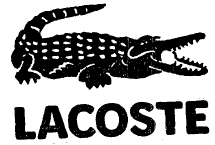Crocodile International PTE Ltd v Lacoste
Court of Appeal
Wild, French and Kos JJ
23 February 2016, 11 April 2016
[2016] NZCA 111
Trade marks – revocation – non-use – s 7(1)(a) Trade Marks Act 2002 (NZ) – distinctive character
Facts:
The appellant (Crocodile International) had applied to revoke trade mark number 70068 owned by the respondent (Lacoste) on the ground of non-use under s 66(1)(a) of the Trade Marks Act 2002 (NZ). Trade mark number 70068 depicted the image of a crocodile with the word “crocodile” written in italics above it.

Lacoste acknowledged that it had never used mark 70068. However, it had used other marks which it argued constituted use of mark 70068 for the purposes of s 66(1)(a) by virtue of the Act’s extended definition of “use of trade mark”. Section 7(1)(a) of the Act provides that “use” in relation to a trade mark included “use in a form differing in elements that do not alter the distinctive character of the trade mark in the form in which it was registered …”. These marks were:


The High Court held that Lacoste had used mark 70068 within the extended meaning of s 7(1)(a). The Judge adopted an approach whereby it was necessary to first assess the points of difference between the mark as used and the mark as registered; and secondly, once the differences had been identified, ascertain if the differences altered the distinctive character of the mark as registered.
Crocodile International appealed on the ground that the High Court adopted the wrong approach to s 7. It argued that before embarking on the two-stage enquiry, the Court should have first identified the essential elements of mark 70068, being those elements that gave it its “distinctive character”.
Held, dismissing the appeal:
Correct approach to s 7
-
The addition of a starting point to the standard two-stage inquiry was an unnecessary refinement and created an overly complicated three-stage test [12]. There was no authority for the suggested addition of a starting point other than “rather oblique obiter comments in an English Court of Appeal decision” [13]. The approach would be inconsistent with relevant decisions. The High Court’s articulation of the two-stage inquiry was therefore correct [17].
Bud and Budweiser Budbrau Trade Marks [2002] EWCA Civ 1534, [2003] RPC 25; Specsavers International Healthcare Ltd v Asda Stores Ltd [2014] EWCA Civ 1294, [2015] FSR 8; E & J Gallo Winery v Lion Nathan Australia Pty Ltd [2010] HCA 15, (2010) 241 CLR 144 referred to.
-
There was no reason why different considerations should apply when the mark as registered was a composite mark, rather than a mark comprising a single element [16].
-
The High Court did not err by saying that the crucial issue is the likely impact of the mark in question on the average consumer and that the analysis is undertaken by reference to the central message of the mark, which could be deduced from the visual, aural and/or conceptual qualities of the mark. Those statements were orthodox and derived from relevant authorities. [17].
Bud and Budweiser Budbrau Trade Marks [2002] EWCA Civ 1534, [2003] RPC 25; Cure Kids v National Sids Council of Australia Ltd [2014] NZHC 3366, [2015] NZLR 90 referred to.
Application to facts
-
The differences between mark 70068 and the mark as used were insignificant and did not alter the distinctive character of mark 70068, which was dominated by the image of the crocodile [20]. The addition of the word “crocodile” to mark 70068 only served to reinforce the dominant element of the mark and added little or nothing to the distinctiveness of the mark. It followed that the addition of the word “crocodile” did not alter the central message of the mark because the word merely described the device and added nothing more [22]. The High Court was correct in finding that Lacoste had used mark 70068 in terms of the extended definition of use in s 7(1)(a) and the mark should not be revoked [25].
E & J Gallo Winery v Lion Nathan Australia Pty Ltd [2010] HCA 15, (2010) 241 CLR compared.

